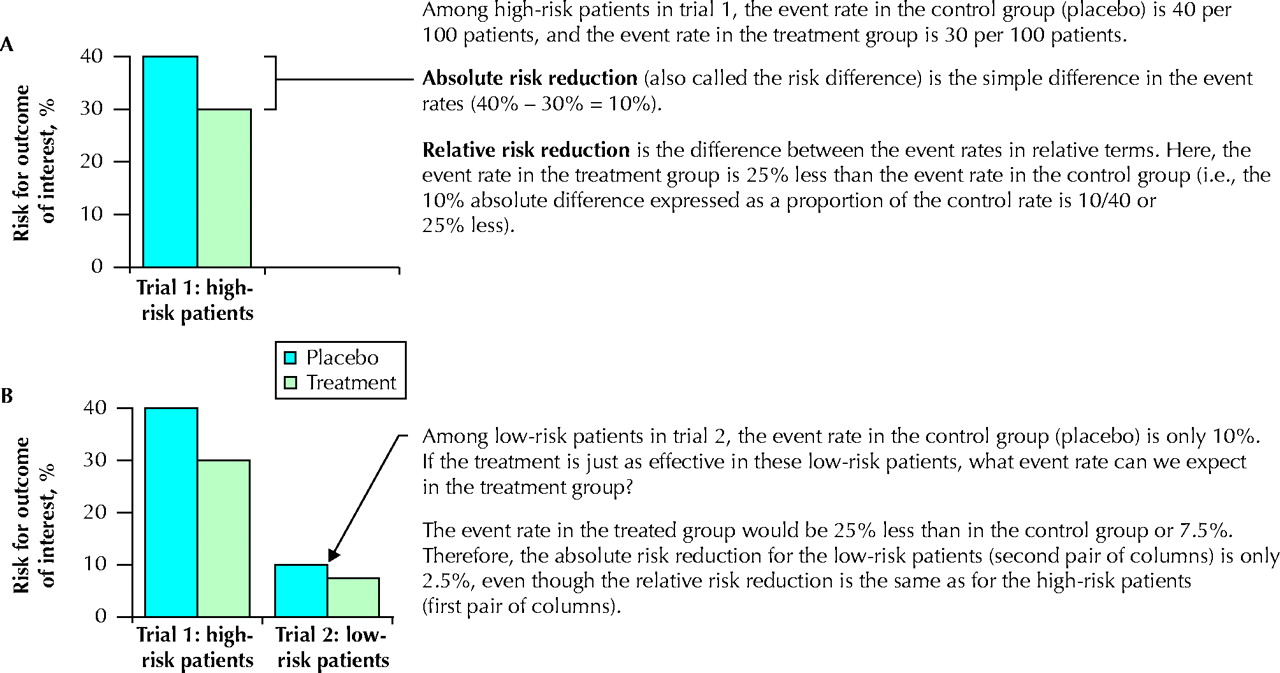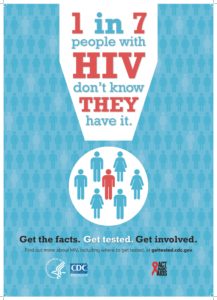Part 2: The Message
2.7 Principles of Message Development
Learning Objectives
- To be able to identify and discuss principles that can aid in the development of effective science and risk communication messages.

This section of the textbook is largely focused on different theories that can be used to develop science and risk communication messages. Regardless of the theory or theories that you will be using to develop your messages, there are several important principles that you must keep in mind to make sure that those messages are effective.
Speak in a language your audience understands
Remember that most people’s formal science education ends in high school. This does not mean that your audience is stupid, it simply means that your job as the communicator is to translate information in a way that is accessible to and engaging for your audience. To do this you must design messages that speak to the head and the heart. Regarding the ‘head’, your message (language, numbers, comparisons, etc.) should be one that your audience can actually understand. Regarding the ‘heart’, the message should also be one that resonates with the audience. This might mean using colloquialisms, imagery, and cultural references that have personal meaning for the people that you are speaking to.
Simplify your message but not its content
It is essential to parse out the ‘need to know’ from the ‘nice to know’. Your core message should contain exactly what your audience requires in order for them to act in manner that is consistent with your communication objectives — no more and no less. This means that you must be brutal about removing any superfluous information, which can be challenging because, as scientists, we like to provide a lot of background, technical detail, and caveats. However, if this detail is not essential to understanding your core message, you should be wary of including it in any core communication products. That being said, you must still provide content that is specific enough to make sure the message is meaningful. Avoid subjective messages like “Your risk is significant!” or “Your risk is negligible!” Instead, use concrete numbers, comparisons (see below), and other tools to explain your meaning.
Example

This message regarding Fetal Alcohol Spectrum Disorder does a good job of speaking to the head and the heart and in simplifying the message but not the content.
Compare (with caution)
People often rely upon metaphor and analogy to understand the world around them. For this reason, a good comparison can really help people to understand their risk. You could do this through analogy (e.g., “Vaccines contain formaldehyde but formaldehyde is naturally occurring in the human body and helps with metabolism. There is approximately 10 times the amount of formaldehyde in a baby’s body at any one time than there is in a vaccine.”) or through comparing to a standard (e.g., “The level of a pesticide is above or below the standard set by Health Canada.”). You can also use comparisons among individuals (i.e., a person with certain demographic or lifestyle characteristics is more or less as at risk than one without). However, comparisons can also backfire and generate outrage (as was discussed in the Hazard x Outrage section). For example, if there is disagreement about the standard (e.g., for the pesticide glyphosate, for which the standards are different in the US, Europe, and Canada), if your comparison appears to trivialize the risk (i.e., the risk of birth defect X is approximately equivalent to one piece of toilet paper in a role that stretches from Vancouver to Toronto), or if your audience views the two things you are comparing as completely different (i.e., if exposure to some chemical has the same likelihood of causing death as getting into a car crash, your audience may view any exposure to that chemical as being unacceptable even if they are a regular driver).
Accurately and meaningfully convey numeric estimates of risk
Quantitative risk messages are particularly difficult to convey because, in general, the level of audience scientific numeracy is even less than the level of scientific literacy. If you are going to present the risk in numbers you must first determine whether you will be present relative or absolute risk. The following figure from Barratt A et al. CMAJ 2004;171:353-358 demonstrates the difference between absolute and relative risk using the results of hypothetical placebo-controlled trials of a new drug for acute myocardial infarction.

The relative risk can be applied across all groups (the relative risk reduction is 25% in both trial 1 and trial 2) while absolute risk is a function of the event frequency and will vary across populations. When someone tells you statins lower the risk of heart attack by 25% your first thought shouldn’t be “Give me statins now!”, it should be “What’s my risk of a heart attack in the first place?” If you’re in a high-risk group like in trial 1, where you have a 40% risk of heart attack, a 25% reduction in relative risk translates into a 10% reduction in absolute risk (and an overall absolute risk of 30%). If you’re in the low-risk group, that 25% reduction in relative risk only lowers the absolute risk of heart attack from 10% to 7.5%. If statins have a side effect that may cause you trouble, this may not be enough of a reduction to pique your interest in the drug.
When talking about risk, avoid using the word “chance” and avoid using percentages — use populations or possible futures and natural frequencies. For example, “Ten out of 100 people like you will experience a heart attack or stroke within ten years without statins, reduced to seven in 100 with statins” — this is an example of populations, or “Of 100 possible outcomes for you, 10 will involve experiencing a heart attack or stroke in 10 years without statins, which is reduced to seven out of 100 with statins” — this is an example of possible futures.
When using natural frequencies and population figures, be mindful of ratio bias — big numbers make risk more dramatic, e.g. people that are told they have a ten in 100 chance of developing cancer consider themselves more at risk than people told they have a one in ten chance.
Positive and negative framing and the order data is presented in are critical too. Imagine patients being told the following:
- Of 100 people having surgery for lung cancer, 10 will die during treatment, 32 will have died by one year, and 66 will have died by five years. Of 100 people having radiation therapy, none will die during treatment, 23 will die by one year, and 78 will die by five years.
- Of 100 people having surgery, 90 will survive treatment, 68 will be alive at one year, and 34 will be alive at five years. Of 100 people having radiation therapy, all will survive treatment, 77 will be alive at one year, and 22 will be alive at five years.
Patients hearing the first — which is negative in tone — will fixate on the “none will die” positive statement and roll with that, even though that treatment ultimately has a worse 5-year survival. Patients hearing the second will likely latch on to the first big positive statement “90 will survive”
Put people to work
Wherever possible, give people something that they can do. Even if they choose not to do it, it will provide a sense of empowerment and an outlet for pent-up frustration and outrage. The caveat to this is that it should be something that is reasonably achievable. For example, don’t make a suggestion that is prohibitively expensive, geographically unachievable, etc. This principle also aligns with our mantra ‘Where there’s a way, there’s a will’. If you have not yet identified a course of action, you should put some serious thought into whether you should even be communicating about the issue.
Keep everything consistent
There are two aspects of consistency: internal consistency and external consistency. Internal consistency means that all aspects of your message (intent, informational content, language, etc.) are consistent with one another, as well as being consistent with your mission. External consistency means that your core message remains the same across time, space, and media platform. In other words, think about internal consistency when you are developing your message and external consistency when you are delivering it.
Use repetition wisely
There is an overwhelming body of literature supporting the fact that repetition is critical to help us understand, learn, and remember. Repetition is particularly important where messages are complex, in crisis situations, where messages are conveyed orally (and therefore the audience cannot revisit the message independently), and where the communicator wants to emphasize a specific aspect of the message. However, repetition should not be used as a substitute for a well-developed message. Repetition that is poorly employed can come across as patronizing, incompetent, or obstructive. Most of the barriers that prevent people from listening to or acting on your message will not be addressed by simply repeating the message over and over.
Example
“We shall go on to the end. We shall fight in France, we shall fight on the seas and oceans, we shall fight with growing confidence and growing strength in the air, we shall defend our island, whatever the cost may be. We shall fight on the beaches, we shall fight on the landing grounds, we shall fight in the fields and in the streets, we shall fight in the hills; we shall never surrender.” – Winston Churchill
The repeated use of ‘We shall fight’ in this classic speech was effectively used to emphasize the unity and unwavering determination of the entire UK citizenry during WWII.
Conversely, another Brit, the former leader of the Labour party, Ed Milliband, botched this BBC interview by repeating the same statement over and over rather than answering the interviewer’s questions.
Takeaways
Key Takeaways
There are several principles that are important for developing efficient and effective science and risk messages. These include:
- Creating messages that your audience understands and that resonate with them.
- Simplifying your message without being vague or overly subjective.
- Use comparisons (e.g., metaphor and analogy) to help your audience understand the message.
- Accurately, clearly, and meaningfully convey numeric estimates of risk.
- Ensure that all aspects of your message are consistent with one another and that it is presented consistently.
- Where possible, provide your audience with ways that they can take action.
- Effectively use repetition to aid in audience understanding and learning.



